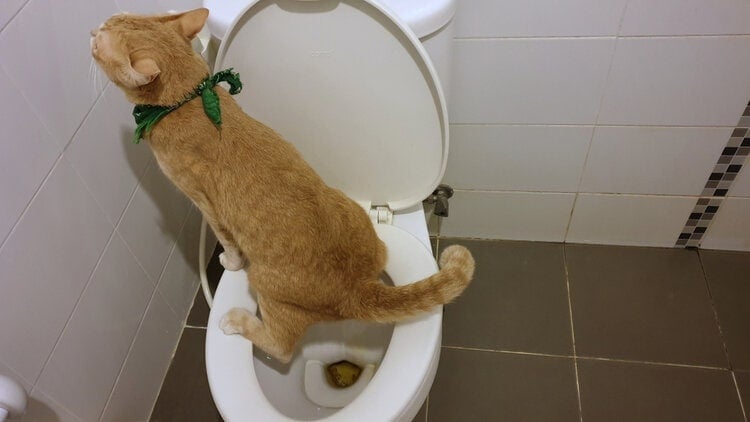How do you feel when it comes to Can You Flush Cat Poo or Litter Down the Toilet??
:max_bytes(150000):strip_icc()/0S1A1090-49a8e2c66f8e41d6901f2559787a7f24.jpg)
Intro
As pet cat proprietors, it's vital to be mindful of exactly how we take care of our feline friends' waste. While it might seem convenient to flush feline poop down the toilet, this technique can have detrimental repercussions for both the environment and human health and wellness.
Alternatives to Flushing
The good news is, there are safer and much more responsible ways to get rid of pet cat poop. Consider the complying with alternatives:
1. Scoop and Dispose in Trash
One of the most typical method of getting rid of cat poop is to scoop it right into a naturally degradable bag and throw it in the trash. Make certain to utilize a dedicated trash inside story and get rid of the waste immediately.
2. Use Biodegradable Litter
Go with naturally degradable cat trash made from products such as corn or wheat. These litters are environmentally friendly and can be safely disposed of in the trash.
3. Bury in the Yard
If you have a lawn, consider burying pet cat waste in an assigned location far from veggie gardens and water resources. Be sure to dig deep enough to stop contamination of groundwater.
4. Mount a Pet Waste Disposal System
Invest in an animal garbage disposal system especially made for pet cat waste. These systems use enzymes to break down the waste, reducing odor and ecological effect.
Health Risks
Along with ecological problems, flushing cat waste can also position health and wellness dangers to human beings. Pet cat feces may include Toxoplasma gondii, a parasite that can create toxoplasmosis-- a possibly serious illness, specifically for expectant females and people with weakened body immune systems.
Environmental Impact
Purging feline poop introduces harmful microorganisms and bloodsuckers right into the water supply, posturing a substantial risk to aquatic ecological communities. These contaminants can negatively affect aquatic life and concession water quality.
Conclusion
Accountable animal possession prolongs beyond offering food and sanctuary-- it additionally entails correct waste management. By refraining from flushing feline poop down the toilet and opting for alternate disposal techniques, we can minimize our environmental footprint and safeguard human health.
Why Can’t I Flush Cat Poop?
It Spreads a Parasite
Cats are frequently infected with a parasite called toxoplasma gondii. The parasite causes an infection called toxoplasmosis. It is usually harmless to cats. The parasite only uses cat poop as a host for its eggs. Otherwise, the cat’s immune system usually keeps the infection at low enough levels to maintain its own health. But it does not stop the develop of eggs. These eggs are tiny and surprisingly tough. They may survive for a year before they begin to grow. But that’s the problem.
Our wastewater system is not designed to deal with toxoplasmosis eggs. Instead, most eggs will flush from your toilet into sewers and wastewater management plants. After the sewage is treated for many other harmful things in it, it is typically released into local rivers, lakes, or oceans. Here, the toxoplasmosis eggs can find new hosts, including starfish, crabs, otters, and many other wildlife. For many, this is a significant risk to their health. Toxoplasmosis can also end up infecting water sources that are important for agriculture, which means our deer, pigs, and sheep can get infected too.
Is There Risk to Humans?
There can be a risk to human life from flushing cat poop down the toilet. If you do so, the parasites from your cat’s poop can end up in shellfish, game animals, or livestock. If this meat is then served raw or undercooked, the people who eat it can get sick.
In fact, according to the CDC, 40 million people in the United States are infected with toxoplasma gondii. They get it from exposure to infected seafood, or from some kind of cat poop contamination, like drinking from a stream that is contaminated or touching anything that has come into contact with cat poop. That includes just cleaning a cat litter box.
Most people who get infected with these parasites will not develop any symptoms. However, for pregnant women or for those with compromised immune systems, the parasite can cause severe health problems.
How to Handle Cat Poop
The best way to handle cat poop is actually to clean the box more often. The eggs that the parasite sheds will not become active until one to five days after the cat poops. That means that if you clean daily, you’re much less likely to come into direct contact with infectious eggs.
That said, always dispose of cat poop in the garbage and not down the toilet. Wash your hands before and after you clean the litter box, and bring the bag of poop right outside to your garbage bins.
https://trenchlesssolutionsusa.com/why-cant-i-flush-cat-poop/

As an enthusiastic reader on Don’t flush cat feces down the toilet, I think sharing that piece of writing was worthwhile. So long as you enjoyed our post please remember to pass it around. Thanks a lot for taking the time to read it.
Visit Our Website